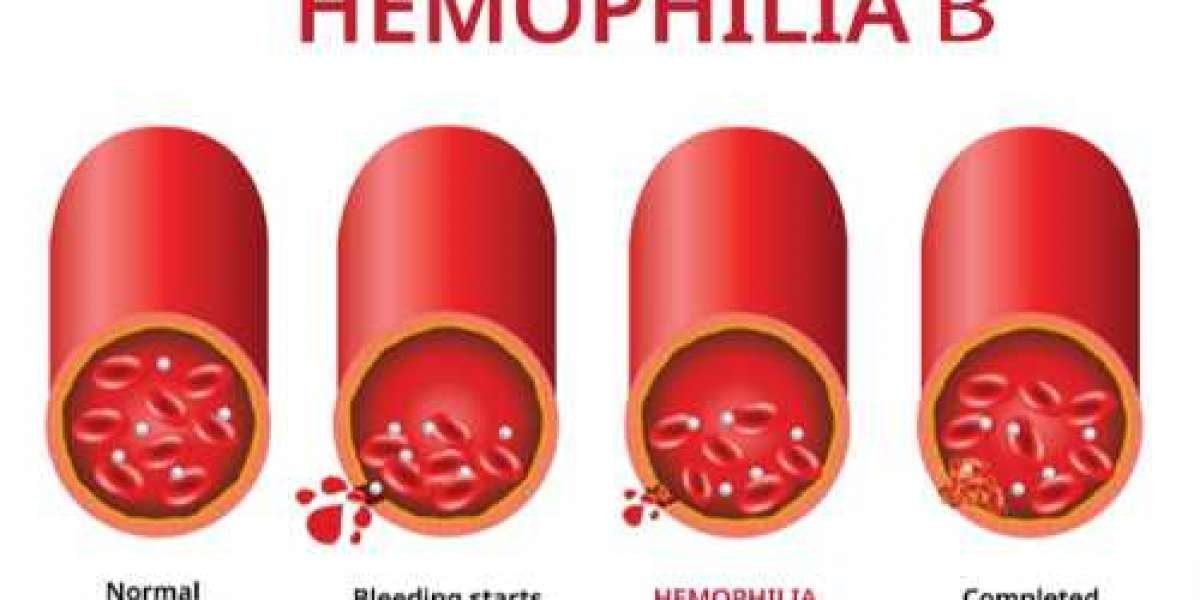Hemophilia B, also known as Christmas disease, is a rare genetic bleeding disorder characterized by a deficiency in clotting factor IX. This X-linked recessive condition predominantly affects males, with females typically serving as carriers of the defective gene. Individuals with hemophilia B experience prolonged and excessive bleeding due to impaired clotting abilities, leading to complications ranging from spontaneous hemorrhages to joint damage and potentially life-threatening bleeding episodes.
For insights into the emerging trends and market dynamics shaping the future of Hemophilia B, explore our in-depth analysis of Hemophilia B Market Insights.
Understanding Hemophilia B: Pathophysiology and Diagnosis
Hemophilia B's pathophysiology centers on abnormalities in the intrinsic pathway of the clotting cascade. Patients typically present with prolonged Activated Partial Thromboplastin Time (aPTT), indicative of factor IX deficiency. Diagnosis involves comprehensive blood tests, including factor IX assays that measure the presence and activity of this essential clotting factor. The severity of hemophilia B varies based on the level of functional factor IX, with severe cases having less than 1% of normal activity, moderate cases showing 1-5%, and mild cases presenting with 5-40% activity.
Hemophilia B Epidemiology and Patient Population
Hemophilia B affects approximately 1 in 25,000 male births worldwide according to the World Federation of Hemophilia (WFH). The condition's prevalence continues to rise due to improved diagnostic capabilities, increased awareness, and better reporting systems, particularly in developing regions. Early diagnosis enables timely intervention, reducing complications and improving patient quality of life.
For detailed insights the Hemophilia B patient pool, visit Hemophilia B Epidemiology.
Hemophilia B Current Treatment Landscape
The treatment paradigm for hemophilia B has traditionally centered around factor IX replacement therapies for non-inhibitor patients and bypass agents for those who develop inhibitors. These therapies aim to restore adequate levels of clotting factor IX, prevent bleeding episodes, and improve patients' quality of life. Despite significant advances in existing therapies, patients continue to experience breakthrough bleeding, progressive joint disease, and reduced quality of life, driving the need for innovative therapeutic approaches.
Key Market Drivers and Emerging Trends
The hemophilia B therapeutic landscape is undergoing significant transformation driven by several key factors. Advancements in gene therapy represent a revolutionary approach, potentially offering a one-time treatment solution by introducing functional copies of the faulty gene into patients' cells, thereby encouraging endogenous production of factor IX.
Improvements in early detection and diagnostic technologies have facilitated earlier intervention and personalized treatment strategies. Next-generation sequencing (NGS) and enhanced DNA-based testing have improved the identification of factor IX gene mutations, allowing for more precise diagnosis and management.
The development of extended half-life therapeutics has significantly reduced the frequency of infusions required by patients, improving treatment adherence and quality of life. Additionally, novel treatment approaches including siRNA therapies, bispecific antibodies, and subcutaneous non-factor therapies are expected to revolutionize the management of hemophilia B in the coming years.
Strategic collaborations between research organizations and pharmaceutical companies have accelerated innovation, contributing to a robust pipeline of potential therapeutic options. The expanding healthcare infrastructure in emerging markets and increasing patient awareness are further fueling growth in the hemophilia B treatment landscape.
For further insights and recent developments in Hemophilia B, visit the Hemophilia B Recent Developments.
Hemophilia B Key Players and Pipeline Therapeutics
The hemophilia B market features numerous established pharmaceutical companies and emerging biotech firms developing innovative therapies. Leading companies include CSL Behring, Pfizer, Novo Nordisk, Sanofi, Alnylam Pharmaceuticals, uniQure, Takeda Pharmaceutical Company, Freeline Therapeutics, Regeneron Pharmaceuticals, Baxalta, Bioverativ, Catalyst Biosciences, Swedish Orphan Biovitrum, Grifols, and Octapharma.
The pipeline for hemophilia B treatments is robust, with several promising therapies in various stages of development. Gene therapies such as Hemgenix (CSL Behring/uniQure), fidanacogene elaparvovec (Pfizer), and FLT180a (Freeline Therapeutics) represent potential curative approaches. Novel non-factor therapies including marstacimab (Pfizer), concizumab (Novo Nordisk), and fitusiran (Sanofi/Alnylam) offer alternative treatment options that may be administered subcutaneously, providing convenience over intravenous factor IX products.
Future Outlook and Challenges
The hemophilia B market is expected to undergo significant evolution with the anticipated approval and commercialization of gene therapies and non-factor treatments. These innovative approaches may fundamentally change treatment paradigms, potentially offering functional cures or significantly reducing bleeding frequency with less burdensome administration regimens.
Despite promising advancements, challenges remain, including ensuring equitable access to novel therapies, managing the high costs associated with innovative treatments, and addressing the needs of patients who develop inhibitors. Long-term safety and efficacy data for gene therapies will be crucial in determining their ultimate role in hemophilia B management.
For further insights and detailed updates on this evolving field, visit our comprehensive insights and expert analysis.
Conclusion
The hemophilia B therapeutic landscape is at a pivotal juncture, with transformative therapies promising to revolutionize patient care. As research continues to advance, patients with hemophilia B can anticipate improved treatment options that may significantly enhance quality of life and disease management. The collaborative efforts of researchers, pharmaceutical companies, healthcare providers, and patient advocacy groups continue to drive innovation in addressing the unmet needs in hemophilia B treatment.
About DelveInsight
DelveInsight is a leading business Healthcare consultancy and market research firm specializing in life sciences. It assists pharmaceutical companies by offering comprehensive, end-to-end solutions to improve their performance. Access all our healthcare and pharmaceutical market Competitive Intelligence Solutions.
A few of the best-selling reports from DelveInsight:
- https://www.delveinsight.com/sample-request/arthrogryposis-market
- https://www.delveinsight.com/sample-request/arthroscopic-shavers-market
- https://www.delveinsight.com/sample-request/artificial-tears-market
- https://www.delveinsight.com/sample-request/aryl-hydrocarbon-receptor-agonists-market-forecast
- https://www.delveinsight.com/sample-request/ashermans-syndrome-epidemiology-forecast
- https://www.delveinsight.com/sample-request/asperger-syndrome-market
- https://www.delveinsight.com/sample-request/astrocytoma-epidemiology-forecast
- https://www.delveinsight.com/sample-request/ataxia-telangiectasia-at-epidemiology-forecast
- https://www.delveinsight.com/sample-request/atherosclerotic-cardiovascular-disease-epidemiology
- https://www.delveinsight.com/sample-request/atopic-dermatitis-competitive-landscape














